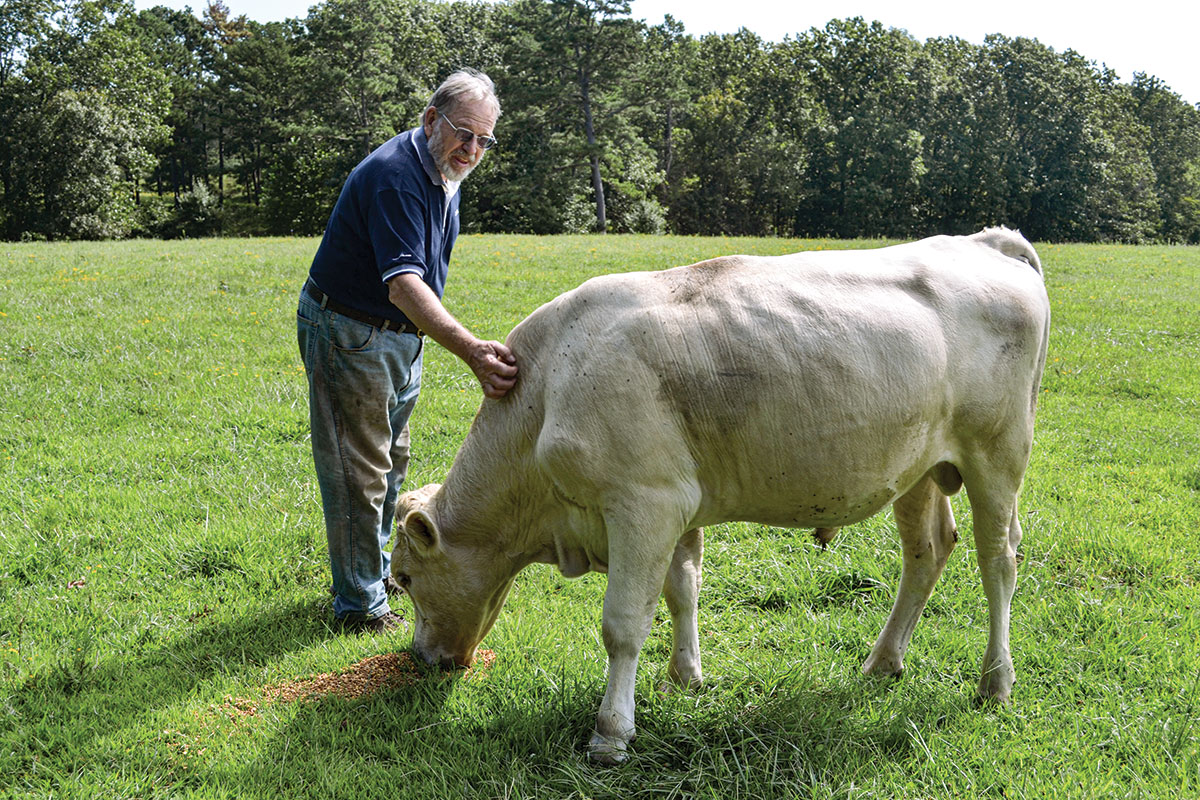
Couple moves to the Ozarks from Minnesota and switch their operation to Wagyu from Linebacks 10 years ago
Once a part of the snow country of northern Minnesota, Dana and Connie Maanum have spent the last 16 years in Douglas County, Mo. They have been raising Wagyu cattle, the epitome of fine, exotic beef, originally from Japan, for a decade.
On their Cloverby Wagyu ranch, they have approximately 40 animals on 143 acres. In the past, they have had as many as 65 but are cutting back a bit at this time.
“When we moved here, we had Gloucester Lineback cattle, an historic breed, raised in the Northeast part of the country,” Dana explained. “They are a tri-purpose breed, raised for dairy, milk and draft, and are really beautiful but people here confused them with Longhorns so they didn’t sell well.”
After a few years with the Linebacks, they decided to move into Wagyu.
“I’d long been interested in the Wagyu, but just didn’t feel like we could afford to get into them beforehand,” Dana said. Still, with some research under his belt, he decided it was time for a change.
“Kobi beef of Japan are a smaller line of the Wagyu breed. It’s not unusual for Wagyu to sell for $100 a steak in a restaurant. Wagyu are a beef cattle bred that can be raised on forage alone, but those who want the abundance of marbling, feed a special ration for 24 months for Red Wagyu or 29 months for Black Wagyu. This varies on different animals and rations, but not many ranchers will divulge their special rations.”
Dana markets his Ozarks-raised Wagyu beef through various means, including Facebook and Craigslist.
Dana credits generations of selected breeding for the quality of Wagyu beef.
“The Waygu have great strength and are very fertile with early puberty,” he said. “The Japanese spent 1,500 years not eating meat and the common people could not own horses. They used the cattle as work animals and only the strongest with the longest endurance were bred. This is the reason some consider the source of their high marbling; as a work animal needs to use energy (fat) right in the muscles for strength and endurance.”
While the breed as made it to the U.S., genetics continue to be important in breeding programs.
“I do a lot of embryo work,” Dana said. “Probably the hardest and most frustrating part of this is when your flushes don’t take. You’ve done a lot of work and have little or nothing to show for it.
“Since I do embryo transfer, I am limited to certain times for breeding. ET protocols should begin around Thanksgiving and end in February for fall calves. For spring calves, ET breeding should begin in May and June. Of course, this is for our area which has high humidity and temps.”
Health protocols are also important to the Maanum operation. Dana said he finds pinkeye to be a persistent problem in the Ozarks.
“Every spring, I inject SolidBac capsules into the neck, under the skin. This medication covers five strains of pink eye. I also give injections for black leg and respiratory and worm them,” he said.
In recent years, Dana has been working to develop a white Wagyu, in a breed that’s known to be primarily black or red.
“The white is very rare. It takes two markers with the dilution gene. We’ve bred to the champion red/black heifer out of the 2016 National Western Livestock Show, who is blonde-colored, and we got two from that, including an embryo calf that turned blond, as I like to call it,” Dana said.
“One of the advantages to the white or blond Wagyu is the new marketing possibilities it opens up in the hotter regions of the world, such as South America and Africa,” Dana said. “The animal’s body temperature can be lowered by as much as two degrees with the lighter hide. That is a huge difference in these tropical areas. The cows don’t have to spend all day, standing in the pond, like we so often see our black cows doing, just to tolerate the heat and there are also less problems with flies.”
Unfortunately, the American Wagyu Association, according to the couple, has not been particularly supportive of their efforts and would not allow them to register the whites and blondes separately. There is to be a decision on that later this year or early next year and if it is not favorable, the Maanums may have to consider starting their own separate association.
In addition to marbling and flavor, the Maanums also promote the reported health benefits of the breed.
“The Wagyu improve the carcass of any other breed they are crossed with, greatly improving the breed. The genetics involved produce a marbled beef that is far superior to all others,” Dana said. “A doctor out of Texas A & M has tested the fat in the Wagyu and finds it is higher in Omega-3 levels than other beef and is comparable to that found in salmon. So here is a way for folks to eat their beef and get the health advantages of eating fish.”
The Maanums have also put a great deal of effort into the breeding of polled Wagyu.
“They are a naturally horned breed and all the pictures you see of them, in Japan, for instance, they always have horns. A lot of producers do not want to deal with that or have to be cutting off those horns so we are finding the polled Wagyu to also be something others are seeking.”
Cattle aren’t the only things roaming their farm. When the Maanums moved to the Ozarks from Minnesota, they also brought their Tamworth hogs and still have about a dozen pigs.
“We like Tamworth over others,” Dana concluded. “We self-slaughter the hogs and smoke them using hickory and sassafras, which adds a sweetness to the pork. And just like the Wagyu in the beef industry, our pork is the best.”







Congratulations to my sister and her husband on this publicity about their delicious meat, Anne Scheetz, Chicago